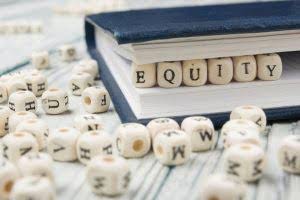
Among the various methods of calculating depreciation, the Double Declining Balance (DDB) method stands out for its unique approach. This article is a must-read for anyone looking to understand and effectively apply the DDB method. Whether you’re a business owner, an accounting student, or a financial professional, you’ll find valuable insights and practical tips for mastering this method. However, using the double declining depreciation method, your depreciation would be double that of straight line depreciation. The best reason to use double declining balance depreciation is when you purchase assets that depreciate faster in the early years. A vehicle is a perfect example of an asset that loses value quickly in the first years of ownership.
What Is Depreciation? Definition, Types, How to Calculate – NerdWallet
What Is Depreciation? Definition, Types, How to Calculate.
Posted: Fri, 16 Jun 2023 07:00:00 GMT [source]
Get instant access to video lessons taught by experienced investment bankers. Learn financial statement modeling, DCF, M&A, LBO, Comps and Excel shortcuts. Master accounting topics that pose a particular challenge to finance professionals.
Double declining balance vs. the straight line method
If you file estimated quarterly taxes, you’re required to predict your income each year. Since the double declining balance method has you writing off a different amount each year, you may find yourself crunching more numbers to get the right amount. You’ll also need to take into account how each year’s depreciation double declining balance method formula affects your cash flow. Depreciation is an accounting process by which a company allocates an asset’s cost throughout its useful life. Firms depreciate assets on their financial statements and for tax purposes in order to better match an asset’s productivity in use to its costs of operation over time.

This accelerated rate reflects the asset’s more rapid loss of value in the early years. The Excel SYD function returns the “sum-of-years” depreciation for an asset in a given period. To understand the adjusting entries for depreciation, we look back at our example above. This is the table that shows the depreciation account of the balance sheet for 5 years of the asset’s life. Using the straight-line depreciation method requires the estimation of useful life and salvage or residual value of the asset.
Formula to Calculate the Double Declining Balance Depreciation
In fact, it is common for this to be applied through the external services of accounting professionals. Harold Averkamp (CPA, MBA) has worked as a university accounting instructor, accountant, and consultant for more than 25 years. The “sum-of-the-years’-digits” refers to adding the digits in the years of an asset’s useful life. For example, if an asset has a useful life of 5 years, the sum of the digits 1 through 5 is equal to 15 (1 + 2 + 3 + 4 + 5).

The double-entry record will be auto-populated for each sale and purchase business transaction in debit and credit terms. Their values will automatically flow to respective financial reports.You can have access to Deskera’s ready-made Profit and Loss Statement, Balance Sheet, and other financial reports in an instant. You get more cashback in tax benefits from the beginning, which can help balance the expense of purchasing a resource.
Double Declining Balance Method Calculator – Excel Template
We can understand this by illustrating the case of a company that identifies huge profits on asset sales. Using this, the company experiences lower net income for many years, but as the book value of the asset is lower than market value, the company achieves a larger profit when the asset is sold. Double Declining Balance or DDB refers to the accelerated method of calculating depreciation in which asset value gets depreciated at twice the rate as that in the straight-line method. Owing to an increased rate of depreciation, it is termed accelerated depreciation. In business, companies purchase equipment or physical assets that have a valuable life or a useful life.
- The double-declining balance depreciation (DDB) method, also known as the reducing balance method, is one of two common methods a business uses to account for the expense of a long-lived asset.
- When accountants use double declining appreciation, they track the accumulated depreciation—the total amount they’ve already appreciated—in their books, right beneath where the value of the asset is listed.
- Let us solve a few examples to easily understand how to calculate Depreciation using each formula.
- Although both DDB and declining depreciation are considered accelerated methods; however, double declining balance uses a depreciation rate that is twice that in the simple declining depreciation.
- At Taxfyle, we connect individuals and small businesses with licensed, experienced CPAs or EAs in the US.
- In the double-declining method, depreciation expenses are larger in the early years of an asset’s life and smaller in the latter portion of the asset’s life.
- DDB is ideal for assets that very rapidly lose their values or quickly become obsolete.